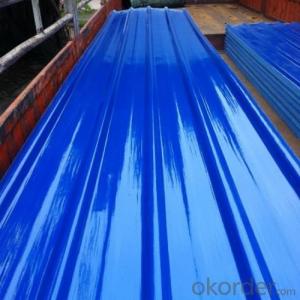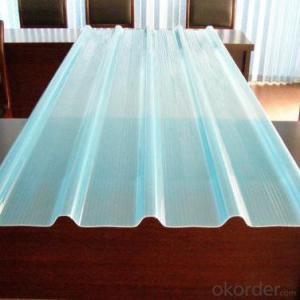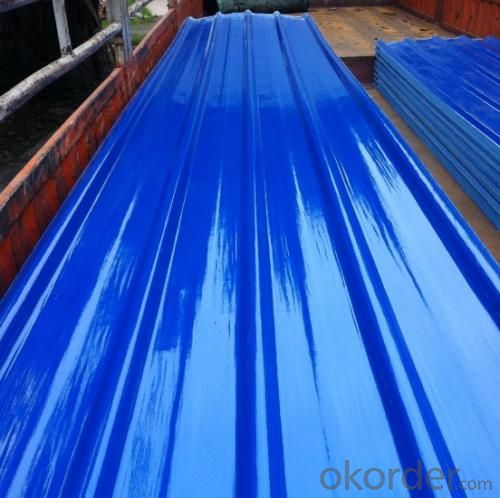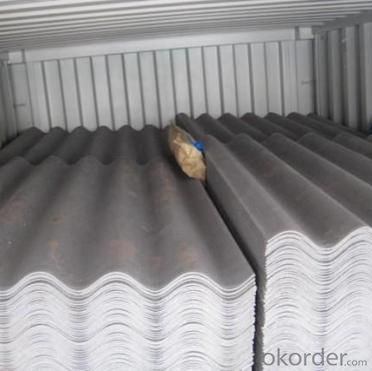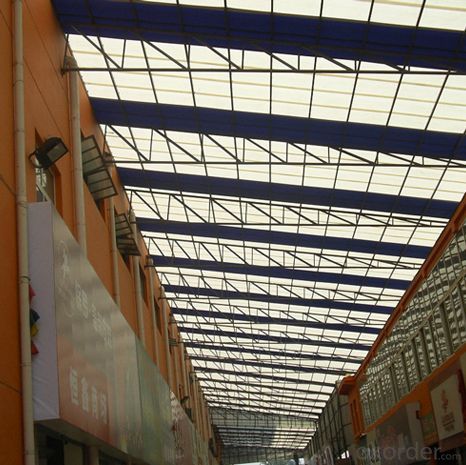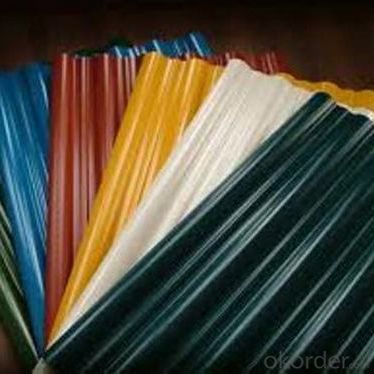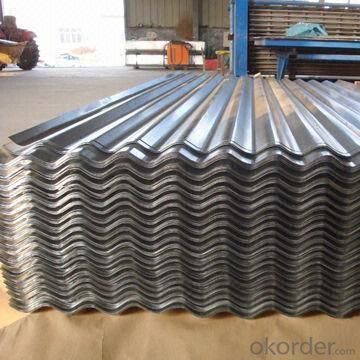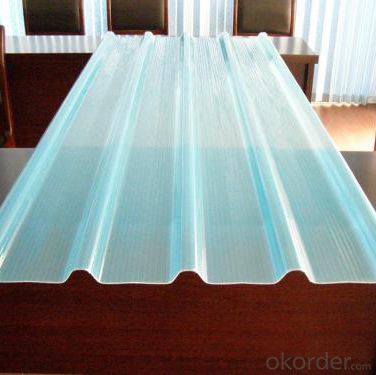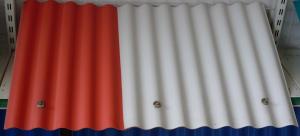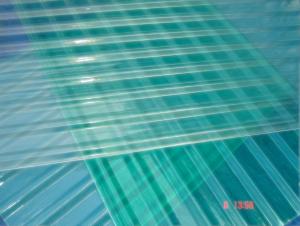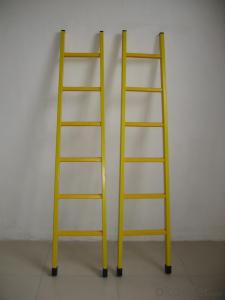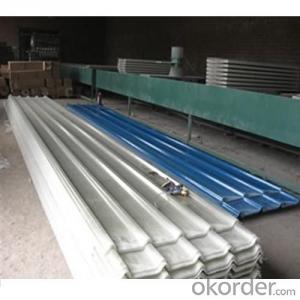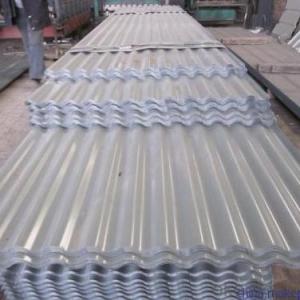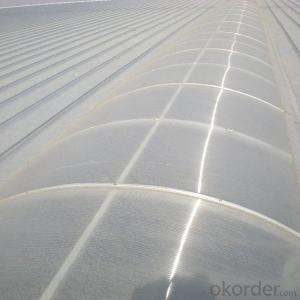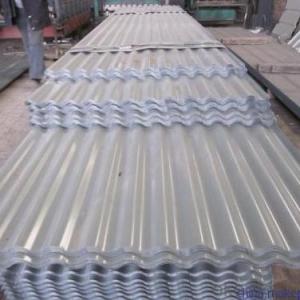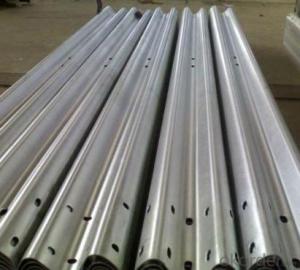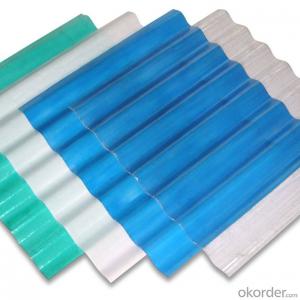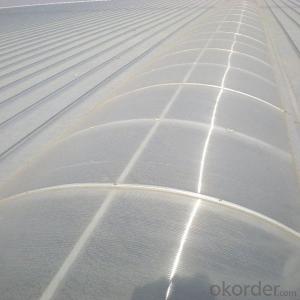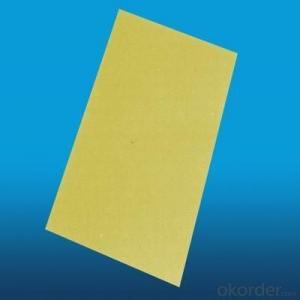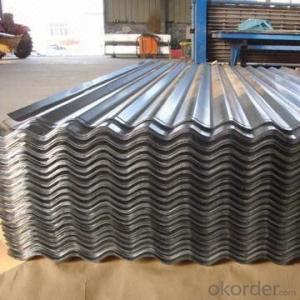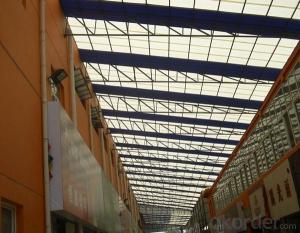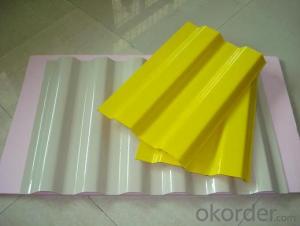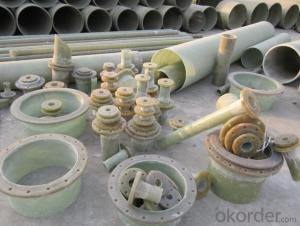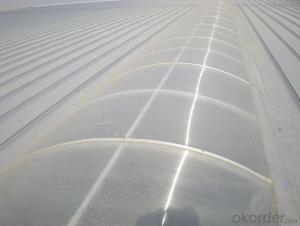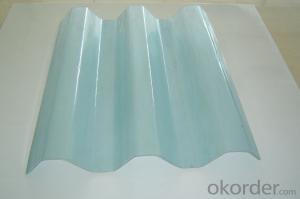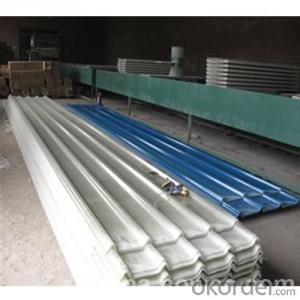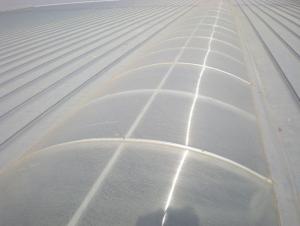FRP Roofing Panel - Fiberglass GRP Roof Panel
- Loading Port:
- Tianjin
- Payment Terms:
- TT OR LC
- Min Order Qty:
- 500 m
- Supply Capability:
- 60000 m/month
OKorder Service Pledge
OKorder Financial Service
You Might Also Like
Specification
PRODUCT DESCRIPTION
FRP GRP Fiberglass Glassfiber Corrugated Roofing is a patent of our company, not like other FRP products, it is produced without yarn, instead, we use mat only. Therefore, the corrugated sheet is more strong in both horizontal and vertical direction.
Fiberglass corrugated sheet is usually used in construction site as protecting facility. It is dagarous for workers in building site since you never know if there is something hard drop down from the high area. So corrugated sheet is installed for preventing the stuff dropping down to hurt people.
Besides, it could also applied as the roof of the constructions.
FEATURES
1) The fiberglass content of new generation greenhouse panel has been improved by 18.3%.
2) Weather resistant and Self-clean ability.
3) Excellent yellowness resistance.
4) Strong impact resistant and low bending rate.
5)Withstand extreme temperature from -38 degree to +110 degree for a long time
6) Aging resistant: specified F4 film added on surface and gel coat makes it endurable for long.
7) More strengthened, safer, cleaner and more economical greenhouse panel.
8) Mainly serve the big factory, warehouse, super markets and other steel-structured project.
SPECIFICATIONS
| Name: | Fibreglass Reinforced Polyester(FRP ) Sheet |
| Material: | Protective film, Unsaturated resin polyester, Fiberglass |
| Weight: | 1800g/2400g/2750g/3050g Square meter |
| Thickness: | 0.8~3.0mm |
| Length: | Customized |
| Temp: | used in -40°c to 140 °c |
| OEM: | Welcomed |
| Color: | Clear/Blue |
PICTURES
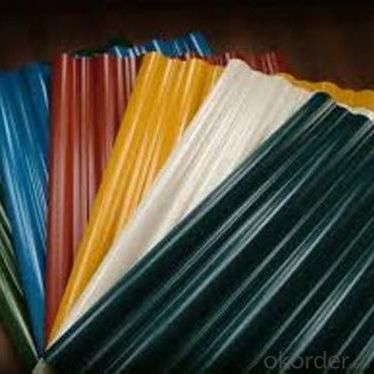
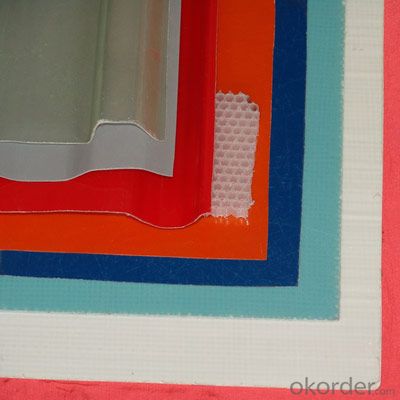

- Q: Can FRP roofing panels be installed on parking garages or carports?
- Yes, FRP roofing panels can be installed on parking garages or carports. FRP (Fiberglass Reinforced Plastic) roofing panels are lightweight, durable, and have excellent resistance to corrosion and UV rays. These qualities make them suitable for use in outdoor structures like parking garages and carports, where they can provide protection from the elements while maintaining structural integrity. Additionally, FRP panels are easy to install and maintain, making them a practical choice for these applications.
- Q: Are FRP roofing panels suitable for recreational areas?
- Yes, FRP (Fiberglass Reinforced Plastic) roofing panels can be suitable for recreational areas. FRP roofing panels are known for their durability and resistance to various weather conditions, making them ideal for outdoor spaces. They are highly resistant to UV rays, which helps prevent fading and damage from sunlight exposure. Additionally, FRP panels are lightweight and easy to install, making them a cost-effective option for recreational areas. FRP roofing panels also offer excellent insulation properties, providing a comfortable and controlled environment in recreational spaces. They can withstand high heat, extreme cold, and are resistant to corrosion, making them suitable for areas with high moisture levels such as swimming pool enclosures or outdoor play areas. Furthermore, FRP roofing panels are available in a variety of colors and designs, allowing for customization and aesthetic appeal in recreational areas. They can be easily cleaned and maintained, ensuring a long-lasting and visually pleasing roof for years to come. However, it is important to note that the suitability of FRP roofing panels for recreational areas may vary depending on the specific requirements and intended use of the space. It is recommended to consult with a professional roofing contractor or engineer to determine the best roofing material for your specific recreational area.
- Q: Do FRP roofing panels require special tools for installation?
- Yes, FRP (Fiberglass Reinforced Plastic) roofing panels do require special tools for installation. These panels are typically installed using standard woodworking tools, such as a circular saw, jigsaw, and drill. However, there are a few specialized tools that may be required depending on the specific installation requirements. One common tool that is often necessary for FRP roofing panel installation is a notching tool or a hole saw. This is used to create precise cutouts and holes in the panels to accommodate fixtures like vents, pipes, or skylights. These tools ensure a proper fit and prevent any potential leaks or gaps in the roofing system. Additionally, a panel adhesive or a specific type of roofing sealant may be required to properly secure the FRP panels in place. This adhesive or sealant is applied to the panel joints and edges to provide a strong bond and prevent water infiltration. While FRP roofing panels do require some specialized tools for installation, they are generally easy to work with and can be installed by professionals or experienced DIY enthusiasts. It is important to follow the manufacturer's instructions and guidelines to ensure a proper and successful installation.
- Q: Are FRP roofing panels resistant to scratching or abrasion?
- FRP roofing panels, commonly known as Fiberglass Reinforced Plastic, exhibit a notable resistance to scratching and abrasion. Their composition includes a robust and enduring material fortified with fiberglass, which enhances their sturdiness and ability to withstand damage. Additionally, the sleek and lustrous surface of FRP panels contributes to their capacity to resist scratches. Nonetheless, it is crucial to acknowledge that although FRP panels offer a general resistance to scratching and abrasion, they are not entirely impervious to harm. The presence of heavy or sharp objects, excessive force, or improper handling may still result in potential scratching or abrasion on the surface. Consequently, it is advisable to handle FRP roofing panels with caution and implement preventive measures to shield them from potential damage.
- Q: Are FRP roofing panels available in different profiles?
- Yes, FRP roofing panels are available in different profiles.
- Q: Are FRP roofing panels resistant to impact?
- FRP roofing panels are generally resistant to impact, thanks to their durability and strength. They can endure various types of impact without breaking or cracking. The reinforced fiberglass in the panels adds extra strength, allowing them to handle heavy loads like hail or falling debris. In industrial and commercial settings, such as warehouses, factories, and agricultural buildings, FRP panels are commonly used because of their crucial impact resistance. However, it's worth noting that the level of impact resistance can vary depending on the specific brand and quality of the panels. To ensure the panels meet the desired impact resistance requirements for a particular project, it is always advisable to consult with the manufacturer or supplier.
- Q: Can FRP roofing panels be used for both indoor and outdoor applications?
- Yes, FRP roofing panels can be used for both indoor and outdoor applications. FRP panels are known for their durability, weather resistance, and versatility, making them suitable for various environments and applications, including both indoor and outdoor settings.
- Q: What types of warranties are available for FRP roofing panels?
- There are various types of warranties available for FRP (Fiberglass Reinforced Plastic) roofing panels, depending on the manufacturer and specific product. The most common types of warranties offered include material warranties, performance warranties, and system warranties. 1. Material Warranties: These warranties typically cover defects in the FRP roofing panel's material or manufacturing. They ensure that the panels will be free from defects that could affect their performance and lifespan. Material warranties can vary in duration, ranging from 10 years to a lifetime warranty, depending on the manufacturer and product quality. 2. Performance Warranties: Performance warranties guarantee that the FRP roofing panels will meet specific performance standards and will perform as intended. They usually cover aspects such as UV resistance, durability, impact resistance, and weatherability. Performance warranties can range from 10 to 20 years, depending on the product and manufacturer. 3. System Warranties: System warranties cover the entire roofing system, including the FRP panels, accessories, and installation. These warranties are offered by manufacturers who provide a complete system solution, ensuring that all components work together seamlessly to deliver optimal performance. System warranties generally have a longer duration, often ranging from 20 to 30 years. It's important to note that warranty terms and conditions can vary between manufacturers, so it's crucial to thoroughly review the warranty documentation before making a purchase. Additionally, warranties may be subject to certain limitations and exclusions, such as improper installation, natural disasters, or neglect. It is advisable to consult with the manufacturer or a professional roofing contractor to understand the specific warranty coverage and requirements for the FRP roofing panels being considered.
- Q: Are FRP roofing panels resistant to warping or bending from temperature changes?
- Indeed, FRP roofing panels exhibit remarkable resistance to warping or bending due to temperature changes. These panels are specifically engineered to endure drastic fluctuations in temperature without compromising their form or structural integrity. The construction of FRP roofing panels involves reinforced fiberglass layers and a resin matrix, which contribute to their exceptional dimensional stability and thermal expansion properties. As a result, they boast exceptional durability and can withstand warping or bending caused by temperature variations. Regardless of whether they are subjected to scorching summers or freezing winters, FRP roofing panels retain their shape and functionality, making them an ideal option for structures located in diverse climatic conditions.
- Q: Can FRP roofing panels be installed on metal roofs?
- Yes, FRP (Fiberglass Reinforced Panels) roofing panels can be installed on metal roofs. However, it is important to ensure that the metal roof is structurally sound and properly prepared before installing the FRP panels. Additionally, proper installation techniques and compatible fasteners should be used to secure the panels to the metal roof to ensure a long-lasting and secure installation.
Send your message to us
FRP Roofing Panel - Fiberglass GRP Roof Panel
- Loading Port:
- Tianjin
- Payment Terms:
- TT OR LC
- Min Order Qty:
- 500 m
- Supply Capability:
- 60000 m/month
OKorder Service Pledge
OKorder Financial Service
Similar products
Hot products
Hot Searches
Related keywords
